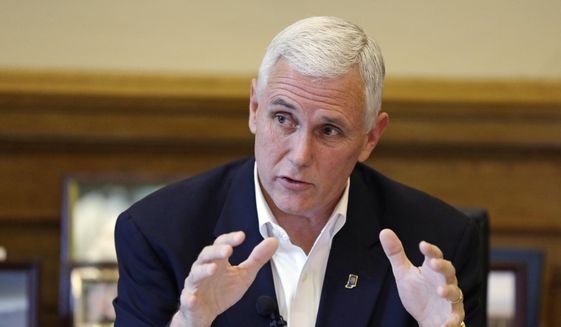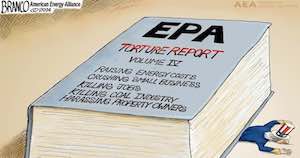The EPA’s final Clean Power Plan, released on August 3, financially hammers coal-dependent states compared to the Obama Administration’s 2014 draft proposal. Nine months after the loss of Kentucky Democrat Senate candidate Alison Lundergan Grimes and the retirement of West Virginia Democrat Jay Rockefeller, the EPA’s attack on coal country is all about going after Republicans.
After the Democrats aligned with the United Mine Workers in the early 20th Century, “coal-country” counties that stretch through Pennsylvania, West Virginia, Eastern Kentucky, Southern Indiana, Southern Indiana and Alabama had been some of the most reliably Democrat bastions in the nation. A number of coal-country counties voted Democrat in every Presidential election from 1932 to 2004.
But Democrats suffered huge losses in the region due to Bill Clinton’s regulations and Al Gore’s environmentalism, coupled with cultural issues like gun control. The impact crippled a key Democrat advantage. George Bush’s 2000 victory in West Virginia cost Al Gore the U.S. Presidency.
Barack Obama only lost Knott County, KY by 8 percent in 2008. But his cap and tradeproposal, along with his enthusiasm for EPA regulation of coal-fired plants, caused him to lose the county by 48 percent in 2012.
With hopes of salvaging some of the Democratic base in June 2014, the EPA’s Clean Power Plan proposed rule under the Clean Air Act was unveiled as the centerpiece of the Obama Administration’s strategy to address climate change. The proposal had a complicated set of formulas “explicated” in dense bureaucratese in a series of technical support documentsthat varied dramatically from state to state.
Despite huge criticism from coal-country Democrat Senate candidate Alison Lundergan Grimes and the Republicans about the EPA harming their states, the effect of the proposed “disparate treatment” would have allowed much more moderate enforcement of coal-countryCO2 emissions. According to an analysis by the Brookings Institute of the 2014 proposed EPACO2 emissions reductions, the “states that emitted the most were generally asked to do the least.”
Despite easier proposedCO2 treatment in 2014, Jay Rockefeller, the West Virginia incumbent Senate Democrat and chairman of the powerful House Commerce Committee, decided not to run for re-election. Five months after the proposed EPA regulations were released, outstanding Democrat Senate candidate Alison Lundergan Grimes lost by 16 percent against Senate Majority Leader
. Coal-country strength helped give Republicans control of the Senate for the first time since 2006.
The final EPA rule is 1,560 pages of complex typeset. But Brookings finds the basic structure is now much more straightforward:
Basically, the EPA has set carbon emissions standards for two types of plants: for fossil fuel-fired steam generating units, 1305 lbs CO2/MWh, and for stationary combustion turbines, 771 lbs CO2/MWh. Now each state’s target is set by looking at a weighted average of their current (2012) fossil fuel-fired electrical generating units and imposing those emission standards.
Where the EPA came up with its CO2-per-megawatt emission standards is sure to be both legally and politically controversial. It is also interesting that nuclear energy seems almost exempt. But it is Republican-controlled states of Kentucky, West Virginia, Indiana, North Dakota, South Dakota, Montana and Wyoming that will be financially hammered.
The Democrat-controlled states of California and the Northeast are tasked by the EPA with much smaller CO2 reductions, because they supposedly embraced renewables and natural gas.






